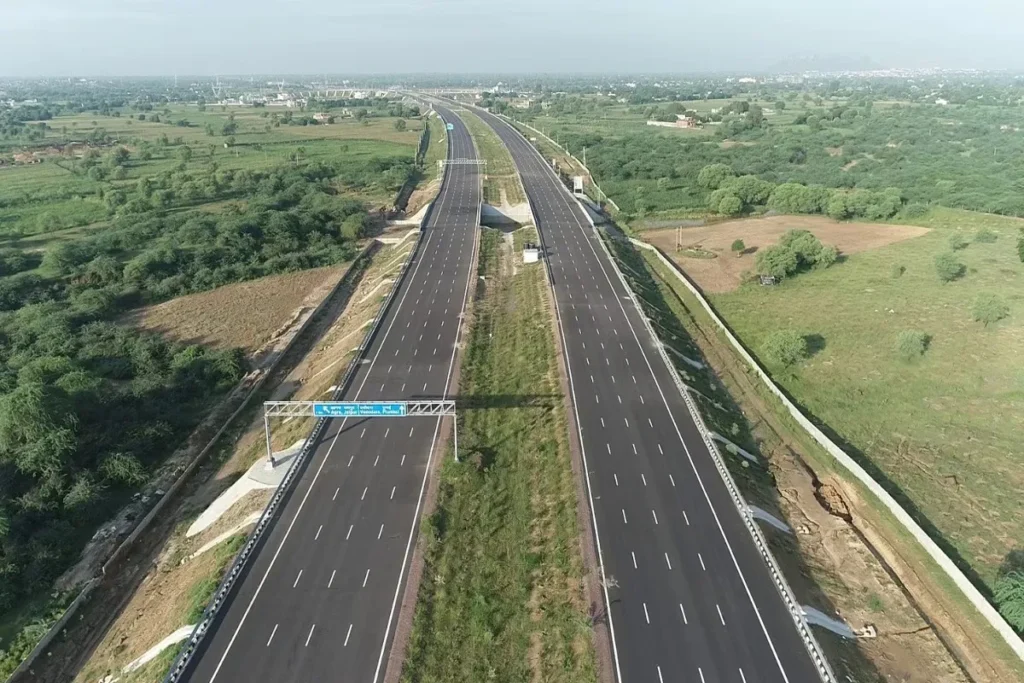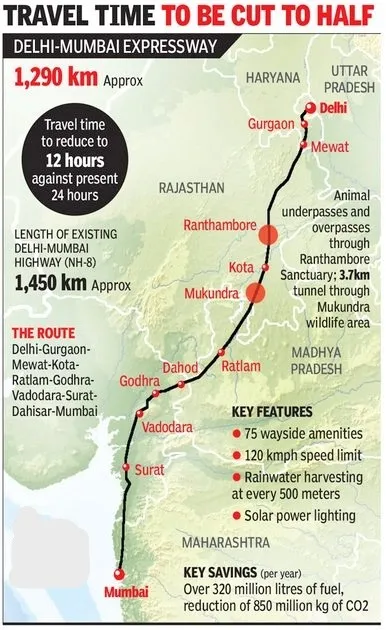What Is the Delhi-Mumbai Expressway?
The Delhi-Mumbai Expressway is a major infrastructure project in India, designed to connect the national capital, Delhi, with the financial hub, Mumbai. Spanning approximately 1,386 kilometers, it aims to significantly reduce travel time between these two major cities. The expressway is part of the Bharatmala Pariyojana, a government initiative to improve road connectivity across the country.

Delhi-Mumbai Expressway Route and Length
The expressway passes through six states: Delhi, Haryana, Rajasthan, Madhya Pradesh, Gujarat, and Maharashtra. Key cities along the route include Jaipur, Kota, Indore, Vadodara, and Surat. The total length of the expressway is approximately 1,386 kilometers, making it the longest expressway in India.
Features and Benefits
- Reduced Travel Time: The expressway is expected to cut travel time between Delhi and Mumbai from around 24 hours to approximately 12 hours.
- Smart Infrastructure: It includes features like automated toll collection, intelligent traffic management systems, and emergency response mechanisms.
- Economic Boost: Improved connectivity is anticipated to enhance trade and commerce between the northern and western regions of India.
Construction Phases and Timeline
Authorities are constructing the expressway in phases. So far, they have completed over 1,150 kilometers across multiple states, with around 756 kilometers already operational. They aim to finish the entire project by 2027, though some sections may open earlier.

Delhi-Mumbai Expressway Project Cost
The total estimated cost of the Delhi-Mumbai Expressway is around ₹1,00,000 crores (approximately $13.1 billion). This includes expenses related to land acquisition, construction, and implementation of advanced technologies.
Impact on Real Estate
The expressway is expected to have a significant impact on real estate development along its corridor. Improved connectivity is likely to boost demand for residential and commercial properties in nearby regions. Areas such as Sohna, Dausa, and Vadodara are witnessing increased interest from investors and developers.
Also Read about – Latest changes on FastTag
Environmental Considerations
Environmental sustainability is a key focus of the project. Initiatives include the installation of solar panels on elevated sections, development of wildlife crossings to protect animal habitats, and implementation of rainwater harvesting systems.
Importance and Future Prospects
The Delhi-Mumbai Expressway will transform transportation in India by offering a faster, safer, and more efficient route between two major cities. It will drive economic growth, generate job opportunities, and boost regional development along its corridor.
Conclusion
The Delhi-Mumbai Expressway represents a significant leap forward in India’s infrastructure development. To get a more details about the project and timelines please refer NHAI Government official website. By enhancing connectivity, reducing travel time, and fostering economic growth, it holds the promise of transforming the country’s transportation landscape.
Feel free to share your thoughts or questions about the Delhi-Mumbai Expressway in the comments below!


